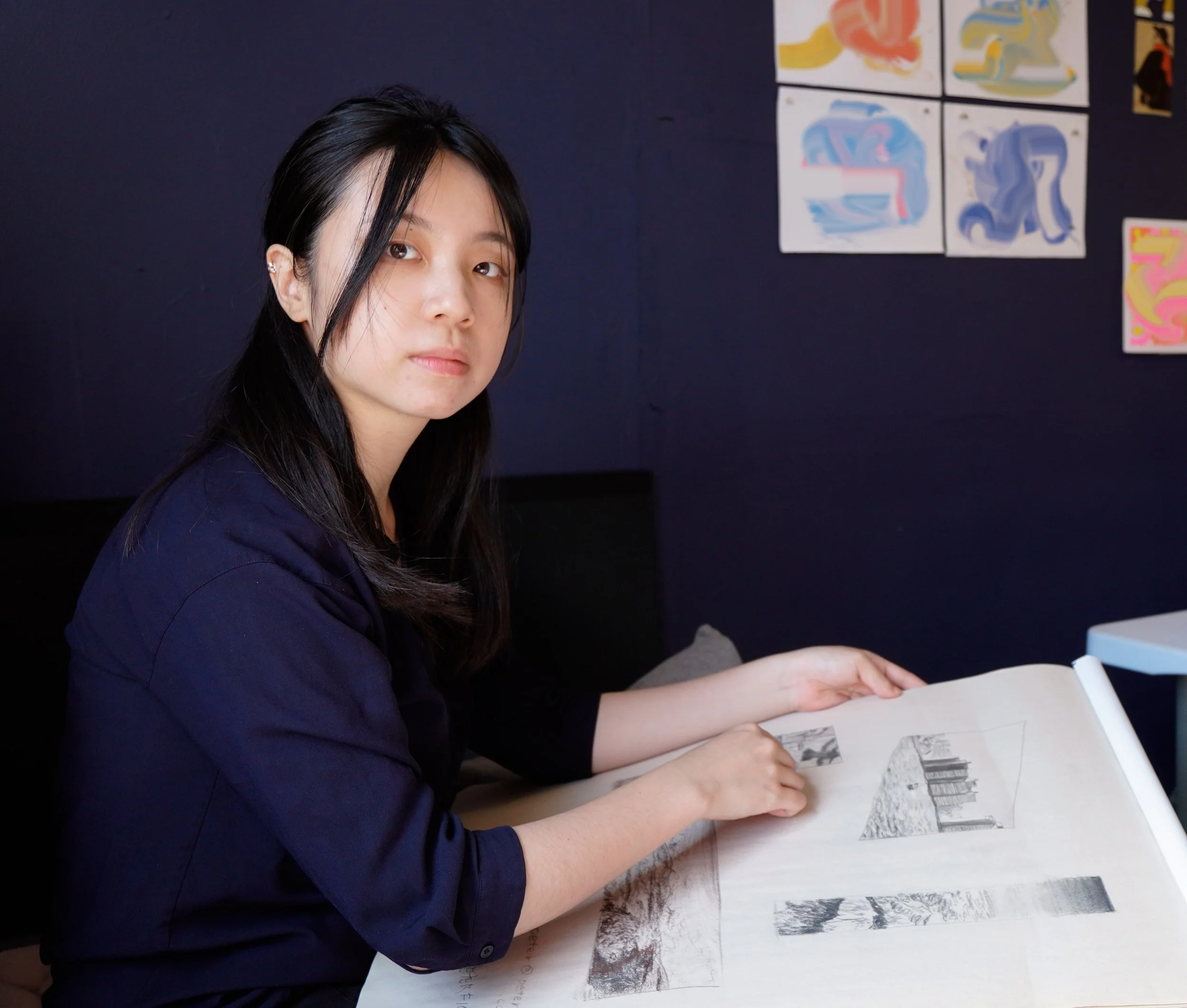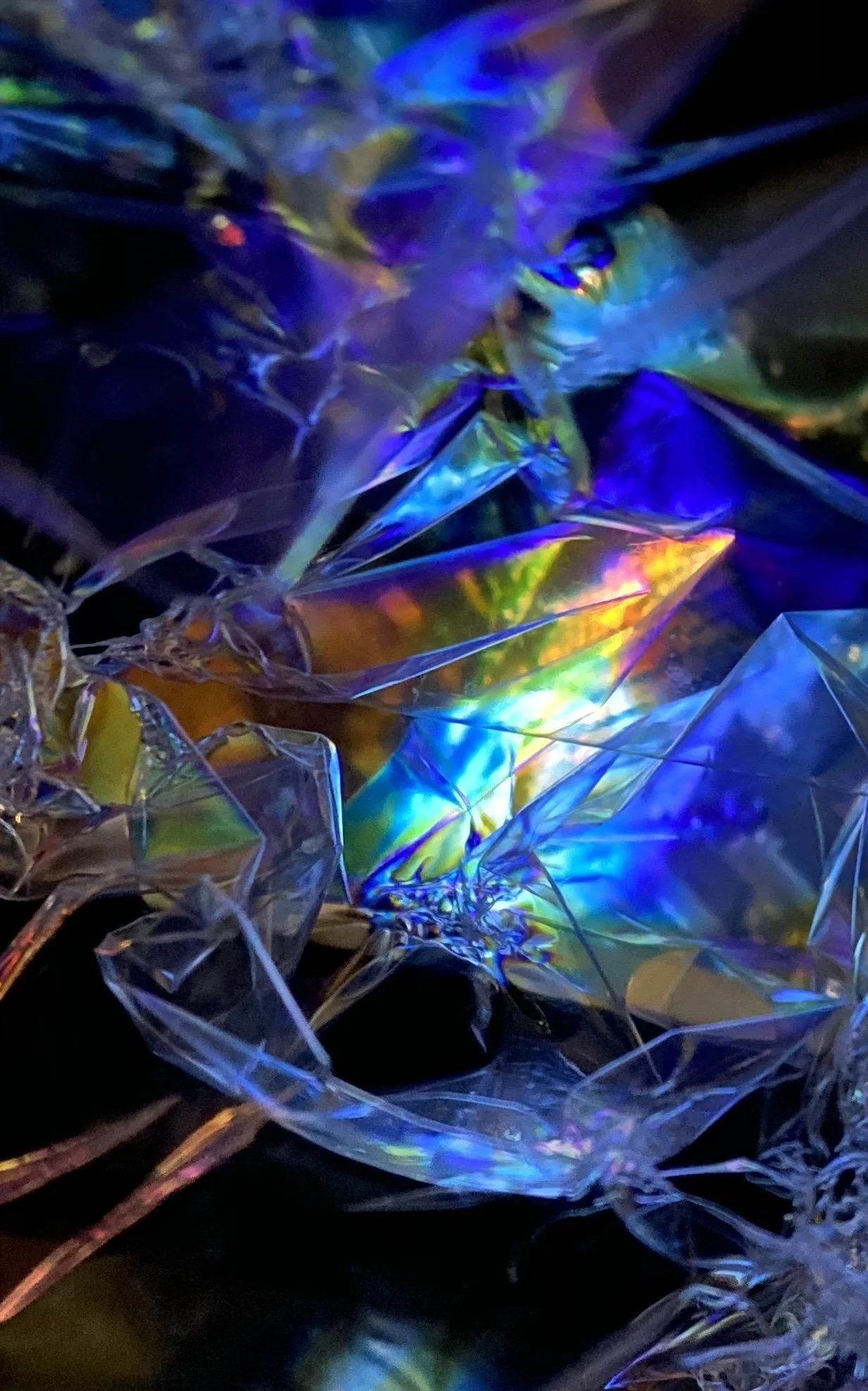Ayse U Akarca is a Turkish scientist and painter, now based in London.
Ayse U Akarca is a Turkish scientist and painter, was born and raised in Turkey, based in London. She received a Bachelor of Science Degree in Biology, and she balances making art with her career in research at one of the world’s leading institutions at UCL. Over recent years, Ayse has been working on numerous research projects on cancer, and her amazing discoveries not only led her first scientific publication but also allowed Ayse to create her earliest painting. As Ayse has progressed with her scientific discoveries, she has become a pioneer in one particular technique. With the evolution of Ayse’s scientific work came a range of emotions, thoughts, and messages that she has continued to capture in her art. Working with different cancer tissues, faced with the reality of what this disease is and the effect it has on people’s lives, Ayse thinks about mortality – and the fine line that exists between life and death. By using different painting techniques and unconventional tools, she channels these sentiments onto the canvas, with the hope that it sparks emotion and curiosity in the mind of the viewer. Ayse aims to push the boundaries and fuse the worlds of science and art to bring life to the reality of disease and pain. Ayse has participated in national exhibitions in London and had group shows. She has collectors in both Europe and Turkey.
Interviewed by Mohamed Benhadj.
Why are you an artist, and when did you first become one?
As a child, I grew up in a household with a very protective mother. I was isolated and not allowed to play outside with my friends. Therefore, I was left for many hours playing by myself with my toys, which led me to create a little magical world in my head. I used to love coloring and painting, and this continued until my early twenties. Unfortunately, art took a backseat in my life because when I migrated to the UK to continue my education, I had to deal with tough life challenges at that time. After seven years of hardship and difficulty, I managed to get my dream job in a scientific laboratory at a fantastic institute, and a year after that, I had my first scientific publication, which was on hairy cell leukemia. I was so incredibly thrilled about my achievement in this competitive environment that I very much wanted to capture that feeling forever, and this is when I decided to get out my art tools and create my first piece called The Hairy Look. So I guess, in a sense, science triggered the artistic spark back into my life and continues to influence my work.
How would you define yourself as an artist?
I am naturally curious, and this quality has reflected in my artistic work as well. I love creating pieces that not only is attention-seeking due to its vivid and bright colors, but it sparks a thought and finally, a shock factor.
What themes do you pursue?
To me, having a theme in art is suggestive of premeditative work, which would most likely be void of spontaneity while missing the opportunity to capture raw emotions. I paint my feelings, which would have most likely been triggered by my scientific work. Fundamentally I can say that the "theme" to my work is my feelings.
You worked several research projects on cancer; this not only led your first scientific publication but also allowed you to create your earliest painting. Please tell our readers about this process.
At the start of a project, I use a microscope to study the molecule of interest in regards to its appearance, location, and any irregularities that are usually associated with cancerous tissue. The next step is staining different cellular parts of this tissue with bright and vivid colors, to detect the spread and the effect of cancer in different parts of a tissue. Unfortunately, this stage is the most challenging, time-consuming, and tedious part of my work. However, on an artistic level, this particular stage triggers varied emotions and ideas, which then I channel onto a canvas.
What is your inspiration for your "Cross Talk" and "The color district" series of abstract paintings?
Some of my research work focuses on cancer immunotherapy as a form of treatment. This particular work involves investigating the relationships and interaction between cancer cells and other cell types. After several attempts, I was able to demonstrate the cell to cell communication by a complex staining technique. Although the results were visually stunning, it shows the reality of some patients not being responsive to therapy. I created Cross Talk based on this research experience.
The Color District
Cross Talk
I was inspired to create The Color District while I was pioneering in a specific scientific staining technique that required multi-layering of different molecular markers. During that time, I was trying to find optimum results in my research, but instead, I faced the imperfect results and repetition. It shaped my thought of a constant need for seeking perfection in our flawed lives.
What obstacles do you face in making art inspired by your actual patient tumor samples and how you tell your own emotions in a medical laboratory environment?
The most challenging obstacle in creating pieces based on patient samples is to remain cognitive of the human element. I keep reminding myself that the core element to both my scientific and artistic work is telling the patient story and making sure I use this opportunity to bring attention to disease awareness.
In an ideal world, a scientist can separate their own emotions from their research; however, this is hardly the reality. When I am running my experiments, I feel a whole range of emotions, some of which are exacerbated by my very competitive work environment. I manage to maintain these emotions, either positive or negative, by knowing that I have an outlet through my art. When I get ready to paint, I think of all the array of emotions that I felt during that specific experiment or what initiated that artistic sparked within me, and then I let the paintbrush take over.
Which of your projects has given you the most satisfaction?
I would have to say "The Hairy Look," as I associate it with my first scientific publication, but most importantly, this particular piece ignited my need and love for art back into my life.
What else are you working on at the moment? Next projects?
Up to now, I have been selective with my scientific research, translating a few of them into artistic language. However, I am planning on extending my research into other cancer types such as breast, prostate, and colon, which are unfortunately affecting a large amount of the UK population. As I have experienced before, each pattern of tissue from different diseases has the tendency of sparking new emotions within me, which I plan to use to create my art. Adding to my research is the specific cell-to-cell communication pathways and the signals that these cells transmit to one another, which can change the behavior of the molecules. It is essential to the research world and me as these cellular communications play a crucial role in cell mutations and tumor development, causing different types of cancer. I am very excited about this future aspect of my work because I anticipate that the representation of this particular type of research requires adding specific textures. Therefore, I see myself utilizing new and unconventional materials to bring my work to life while still keeping the dignity of my inspirations. The main message of my work would always bring awareness to the life-threatening diseases that surround us and appreciating the delicacy of life.



















